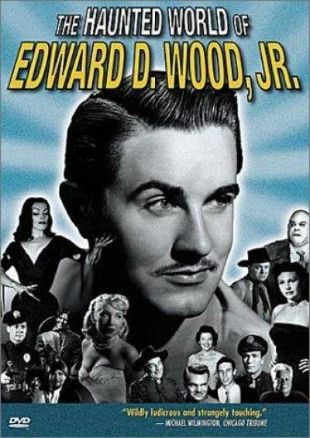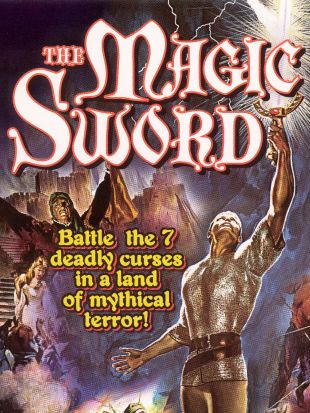Wasp-waisted, exotic Maila Nurmi was perhaps best known under the name of Vampira, the character that she created. She was one of the more startling (albeit marginal) pop culture figures of the 1950s and made an indelible mark in movies -- principally in a role that didn't have a word of dialogue. The Finnish-born beauty contest winner and niece of Olympic athlete Paavo Nurmi, Maila Nurmi arrived in Hollywood at the end of the 1940s, crossing paths with Marilyn Monroe (during her pre-stardom days as Norma Jean Baker) in the course of working as a dancer, model, and actress. The turning point in her career came in 1953 when Nurmi attended a masquerade ball in Hollywood in the guise of the ghoul woman from the Charles Addams cartoons (later christened Morticia in the television adaptation). Binding her breasts and painting her body a stark white, she looked like a preserved corpse. Nurmi ended up winning the party's top prize and in the course of the attendant publicity, caught the eye of television producer Hunt Stromberg Jr., the son of the movie producer Hunt Stromberg. His station, KABC-TV, had a late-night horror movie showcase and he offered Nurmi the chance to host it in her ghoul woman guise. The Vampira Show, as it became known, was a campy phenomenon in Los Angeles in 1954-1955 and Nurmi earned a place in pop culture history as the first television horror movie host, a fraternity which later included such figures as John Zacherle and even kid-show host Claude Kirschner. Surrounded by spooky settings, plastic bugs, and other horror film accoutrements, Nurmi delighted audiences with her offbeat humor and sexually provocative persona, which was her own creation. Indeed, with her more sexually suggestive appearance as Vampira, Nurmi became the model for Carolyn Jones' Morticia Addams on The Addams Family, as much as was Addams' own ghoul woman creation, if not more so. She later took the act to television station KHJ in Los Angeles and built up a serious cult following, which included the actor James Dean. A dabbler in the offbeat, Dean initially approached Nurmi because he thought she was seriously involved in mysticism and the occult and only then discovered that it was all an act, although the two remained close friends. Nurmi's Vampira was the subject of coverage in Life magazine and Newsweek, and fan clubs sprang up around her persona. Her break into motion pictures -- though it hardly seemed like anything important at the time -- came about when director Edward D. Wood Jr. approached Nurmi about appearing in a movie he was making called Grave Robbers From Outer Space (later renamed Plan 9 From Outer Space). From an afternoon's work and 200 dollars, Wood got footage of the wasp-waisted Vampira wandering (or perhaps vamping) around a cheesy graveyard set with ex-wrestler Tor Johnson. She didn't have any dialogue and the movie was greeted with indifference and derision when it was finally released, but Nurmi's footage in Plan 9 From Outer Space became her most lasting pop-culture image, reprinted and recreated for decades. The mute portrayal was also her idea, since Nurmi reportedly couldn't abide the dialogue that had been written for her character. None of the Vampira shows from television were preserved and the program disappeared after the mid-'50s in a dispute between Nurmi and her producers (she describes herself as being "blacklisted"). As an actress, Nurmi has appeared on Broadway in Catherine Was Great and in movies as lab technicians, beat poetesses, and other off-beat roles, but Vampira remains he trademark and signature. Nurmi disappeared from popular culture in the 1960s, although the Morticia Addams character kept the Vampira influence alive well into the middle of the decade and beyond in reruns. In the early '80s, she gained attention in regards to her friendship with James Dean (in the film James Dean: The First American Teenager). She also attempted (unsuccessfully) to sue the actress Cassandra Peterson over the latter's screen persona of Elvira, Mistress of the Dark. Well into her eighties, Nurmi was occasionally rediscovered whenever the work of Edward D. Wood Jr. was reshown and re-evaluated -- particularly after director Tim Burton's 1994 biopic Ed Wood was released. Nurmi was even the subject of a Finnish documentary, 1995's About Death, Sex and Taxes. She also turned up in 1998's little-seen Billy Zane vehicle I Woke Up Early the Day I Died adapted from an unproduced Wood script.
Maila Nurmi
Share on


